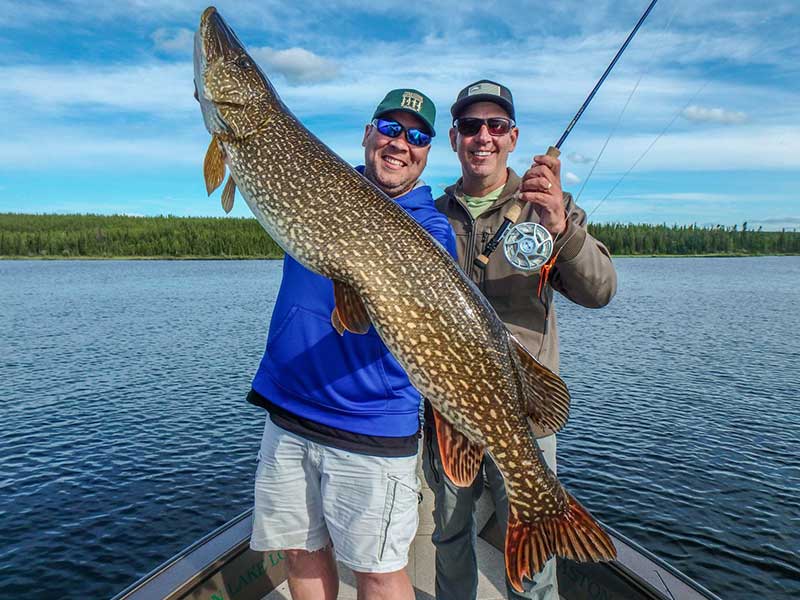By Phil Wiebe
Dog days of summer? Bring it on! There are plenty of persistent “rules of thumb” and ‘old wives tales’ in the fishing world, but one of the most inaccurate may involve the behavior’s of Northern Pike during the warm summer months.

While you may have heard that warm water and the sun can drive pike to seek cooler refuge, it seems that the opposite may be true, particularly on northern Canadian Lakes. While there are many factors involved in summer location patterns, it is clear that pike are very fond of both sun and heat! As a guide, one of the most asked questions I hear is “when is the best time to come fishing?”. My answer is often met with some skepticism when I say that July may be the best option for finding and catching big pike on the fly, with the key to our locations being sand.
While it may be true that pike are leaving certain shallow areas when the water temperatures start climbing, it is not the actual temperature but rather the oxygen levels that dictate their movement. While the dark mud and peat bottom bays are emptying, the clear sand bottom bays are attracting all kinds of fish! If you’ve ever pulled into a dark bottom bay and seen methane bubbles rushing to the surface, you have also probably noticed a lack of fish. Methane generally means less dissolved oxygen, which means fewer fish.
It isn’t just the pike moving to the beach in the summer, this is also the time when the baitfish hatches are in full swing. This will bring in the smaller predators like perch, whitefish and smaller pike. While there is plenty of food available, it seems that the biggest pike are there to relax and digest as opposed to feeding. So this begs the question, why are targeting inactive fish? the answer is simple, we target them where we can find them! Being able to see the pike also gives us a major advantage that allows anglers to present proper flies for sight fishing making activity levels almost a non-factor.
One of the most significant advantages to this type of pike fishing is the clarity of the water and resulting ability to see pike from a distance. Pike, like many fish, have the ability to assume the color of the bottom. This can occasionally make them difficult to spot, but with good practice and the right sunglass it becomes much easier! Sight fishing and fly fishing go hand in hand to produce some of the most exciting days you could ever have on the water. Of course we all enjoy catching fish, casting to it, and hopefully an awesome take, that is just on another level altogether.

Now with the assumption that we are targeting inactive fish, I generally like to throw a more subtle streamer in these situations such as a 5″ bunny leech, whistler or a Chip’s northern Magic, just to name a few. Of course as with all things fishing, there tends to be all sorts of theories and disagreements as to what is your best fly. I can imagine legendary guide Chip Cromarty saying, “well actually I might want to take a more aggressive approach” as he pulls out one of his giant Monster Magic monstrosities! Professional pike guide Andrew Marr from the pikeonthefly.com team has great success sight fishing sand flat pike with all black bunnies and Chip’s Monster Magic’s. Triggering these big, lazy, flats dwelling fish with a big, noisy fly has certainly been done with great success at times, plus you have the added benefit of a more enthusiastic strike!
So, while I will never assume to know that there is one definite best time to catch fish, I can certasinly say that sight fishing big shallow water pike in the warm July sun is pretty hard to beat!


